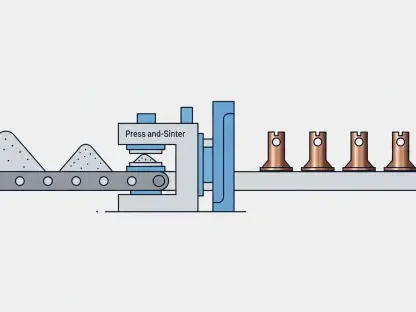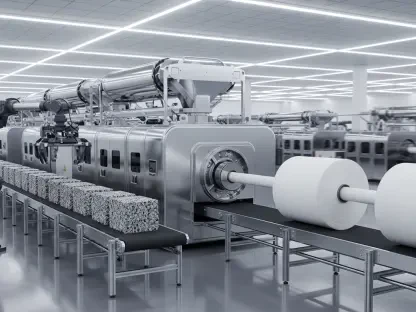The year 2024 has marked a tumultuous period for the pharmaceutical industry, grappling with widespread drug shortages that have left healthcare providers scrambling and patients in distress. These shortages have not only highlighted the vulnerabilities within pharmaceutical supply chains but have also underscored the urgent need for reform and innovation. As the crisis unfolds, it becomes increasingly clear that a multifaceted approach is necessary to bolster the resilience and reliability of these critical networks, ensuring the steady supply of essential medications in the face of ongoing and future disruptions.
The Complex Causes of Drug Shortages
Global drug shortages in 2024 can be attributed to a confluence of factors, each adding layers of complexity to an already fragile system. Global trade tensions have disrupted the import and export of essential raw materials, causing delays and bottlenecks that ripple across the entire supply chain. Simultaneously, ongoing wars have further strained supply routes, making it difficult to maintain consistent drug supplies. The lingering impacts of the COVID-19 pandemic have exacerbated these issues, with many manufacturers and suppliers still coping with heightened demand and disrupted operations. Broader economic instabilities, such as inflation and fluctuating currency values, compound these challenges by increasing costs and reducing predictability.
Despite the pharmaceutical industry’s robust focus on research and development (R&D) for innovative drugs, the downstream processes of manufacturing and logistics have not received the same level of attention or investment. This imbalance has left the industry vulnerable to disruptions, revealing significant blind spots in the supply chain. While the front end of drug discovery continues to evolve, the back end struggles with inefficiencies and outdated practices, making it difficult to respond swiftly to emerging challenges and complex disruptions.
Shifting the Focus to Manufacturing and Logistics
Historically, the pharmaceutical sector has been synonymous with groundbreaking advancements in drug discovery and treatment modalities. However, as drug shortages become more pervasive, it is clear that innovation must extend beyond R&D to encompass downstream manufacturing and logistical operations. Enhancing the efficiency of these processes is pivotal for ensuring the sustainable delivery of medications.
At the heart of this challenge is the predominance of generic drugs, which constitute a significant portion of the global pharmaceutical market, especially in the United States and Europe. These low-margin, off-patent medications are disproportionately affected by supply chain inefficiencies. The lack of adequate investment in the production and distribution infrastructure for generics has led to vulnerabilities that are now causing widespread shortages. Addressing these gaps requires a paradigm shift, encouraging stakeholders to prioritize the foundational aspects of manufacturing and logistics.
To truly strengthen the pharmaceutical supply chain, it is crucial to address the systemic issues plaguing the production and distribution of generic drugs. Investment in state-of-the-art manufacturing facilities, improved quality control measures, and efficient distribution networks is necessary to ensure the reliability of generic drug supplies. Without such investments, the supply chain will remain susceptible to the kinds of disruptions that have led to the current crisis, perpetuating a cycle of shortages and inefficiencies that compromise patient care.
Leveraging Technology for Real-Time Visibility
One of the most promising solutions to enhance pharmaceutical supply chain resilience lies in the adoption of advanced technologies. Real-time tracking systems can provide unprecedented visibility into the movement and status of inventory at every stage, from raw materials to finished products. This transparency enables stakeholders to make informed decisions, anticipate potential disruptions, and respond proactively to mitigate their impact.
Interoperable systems are particularly crucial in achieving this level of visibility. By ensuring seamless data exchange across different segments of the supply chain, these systems facilitate a cohesive and efficient network. Manufacturers can predict shortages based on current supply levels, distributors can optimize delivery routes, and healthcare providers can manage stock levels more effectively. The integration of such technology transforms data into actionable insights, driving proactive measures to sustain continuity and resilience within the supply chain.
Furthermore, the emphasis on real-time visibility and interoperability underscores the importance of interconnected networks. These networks support real-time information sharing across all stakeholders, enabling a coordinated response to potential disruptions. Investing in these technologies ensures that the supply chain is not only robust but also adaptive to changing circumstances. As the pharmaceutical industry grapples with the complexities of global supply chain management, the ability to leverage real-time data and foster interconnected systems becomes an essential pillar of resilience.
Learning from Other Industries
The pharmaceutical sector can draw valuable lessons from industries that have successfully established resilient supply chains, such as retail and automotive. These industries have harnessed technology and interoperability to create efficient, responsive supply networks capable of withstanding various disruptions. By adopting similar strategies, the pharmaceutical industry can enhance its supply chain resilience.
In the retail industry, real-time inventory tracking and demand forecasting technologies have revolutionized supply chain management. Retailers can quickly adapt to changes in consumer demand, ensuring that products are available when and where they are needed. Similarly, the automotive industry has embraced just-in-time manufacturing and advanced logistics to minimize waste and optimize production schedules. These industries exemplify how the integration of technology and systematic approaches can create agile and resilient supply chains that respond effectively to market demands and disruptions.
Applying these principles to the pharmaceutical sector involves investing in technology that provides end-to-end visibility and fosters collaboration among all supply chain participants. By leveraging best practices from other industries, pharmaceutical companies can build supply chains that are not only resilient but also agile and responsive to emerging challenges. The lessons learned from retail and automotive supply chains offer a roadmap for pharmaceutical stakeholders seeking to navigate the complexities of global drug supply in an era marked by unprecedented challenges and transformational opportunities.
Investing in the Fundamentals
The year 2024 has proven to be a challenging time for the pharmaceutical industry, which is currently facing significant drug shortages. Healthcare providers are scrambling, and patients are suffering due to the lack of essential medications. This crisis has exposed the weaknesses within pharmaceutical supply chains, underscoring the dire need for reform and innovation to address these issues. These shortages aren’t just a temporary problem; they signify broader structural issues that must be tackled to ensure the steady supply of drugs.
As the situation worsens, it’s become evident that a multifaceted strategy is crucial. This approach must focus on enhancing the resilience and reliability of supply chains to cope with both present and future disruptions. Diversifying manufacturing sources, improving regulatory frameworks, and investing in advanced technologies could be part of the solution. Healthcare providers and policymakers need to collaborate closely to build a robust system that can withstand such pressures. Only through such concerted efforts can we hope to stabilize the industry and ensure consistent availability of essential medications.









